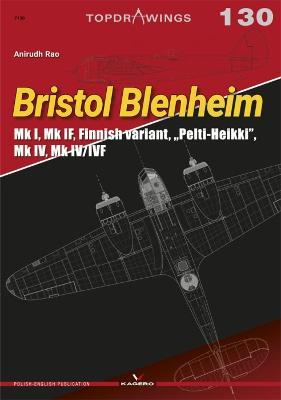Bristol Blenheim: Mk I, Mk If, Finnish Variant, Pelti-Heikki, Mk IV, Mk IV/Ivf

Bristol Blenheim: Mk I, Mk If, Finnish Variant, Pelti-Heikki, Mk IV, Mk IV/Ivf
The Bristol Blenheim was one of the most popular British aircraft at the beginning of World War II. It was a very versatile and modifiable machine, and therefore typical bomber, reconnaissance, and fighter (including night) versions were created.
The first mass-produced version was the Mk I, which featured a richly glazed nose part of the fuselage. The most common version in the air force of several countries was the Mk IV, in which the glass nose of the aircraft was extended so that the bombardier could lie freely in a special cradle during targeting. The nose of the fuselage had an asymmetrical "dent" on the left side of the fuselage (in its upper part), providing better visibility for the pilot sitting in a separate cockpit. This version also had more powerful engines and a longer range, but slightly lower speed and ceiling.
PRP: 118.80 Lei
Acesta este Prețul Recomandat de Producător. Prețul de vânzare al produsului este afișat mai jos.
106.92Lei
106.92Lei
118.80 LeiLivrare in 2-4 saptamani
Descrierea produsului
The Bristol Blenheim was one of the most popular British aircraft at the beginning of World War II. It was a very versatile and modifiable machine, and therefore typical bomber, reconnaissance, and fighter (including night) versions were created.
The first mass-produced version was the Mk I, which featured a richly glazed nose part of the fuselage. The most common version in the air force of several countries was the Mk IV, in which the glass nose of the aircraft was extended so that the bombardier could lie freely in a special cradle during targeting. The nose of the fuselage had an asymmetrical "dent" on the left side of the fuselage (in its upper part), providing better visibility for the pilot sitting in a separate cockpit. This version also had more powerful engines and a longer range, but slightly lower speed and ceiling.
Detaliile produsului










